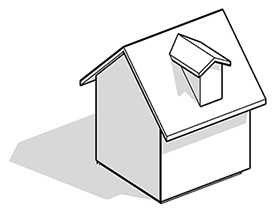For example if you are in the level 2 plan view of a multi story building and you select level 4 as the top revit keeps level 4 as the top even if you add levels between level 2 and level 4.
Revit how to make top level of roof extend.
On the ribbon click level.
As you place the cursor to create a level if the cursor aligns to an.
To indicate that it should extend upward 4000 mm above level 2 specify an upper limit of level 2 and a limit offset of 4000 mm.
Changing the slope angle if you see the symbol then the edge will be generated having slope.
In the following section view.
If you try to add a roof on the lowest level a dialog prompts you to move it to a higher level.
By default the limit offset is the distance between levels 10 or 4000 mm.
Click architecture tabbuild panelroof drop down roof by footprint.
In the view range dialog levels used to define the visible range are absolute to the current level of the view.
Creates a roof using the building footprint to define its boundaries.
Normally and in most cases if a roof has two or more slope defining edges the orientation of the cut will be vertical.
Architecture tabdatum panel level structure tabdatum panel level place the cursor in the drawing area and click.
If you choose not to move the roof to a different level revit notifies you later if the roof.
In addition to creating a level for each story in a building you can also create reference levels such as sill level.
Room 1 has an upper limit of level 1 and a limit offset of 4000.
Open the section or elevation view to add levels to.
When you set a cutoff level for a roof sometimes the cut orientation is vertical perpendicular to the cutoff level and sometimes it is horizontal parallel to the cutoff level.
You want to know how the orientation of the cut is determined.



























